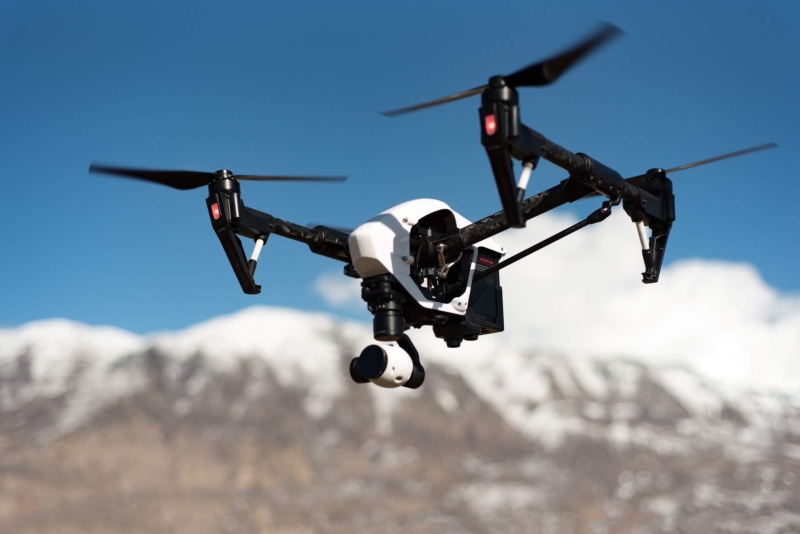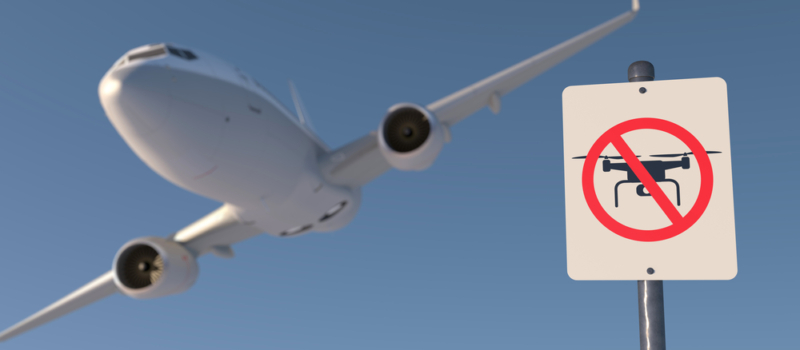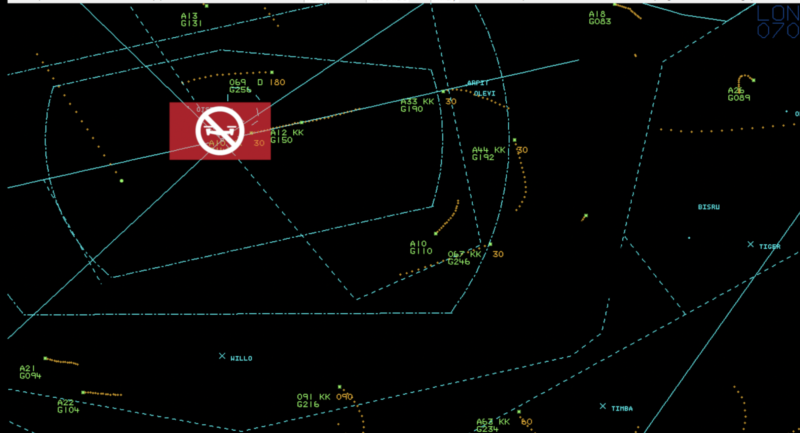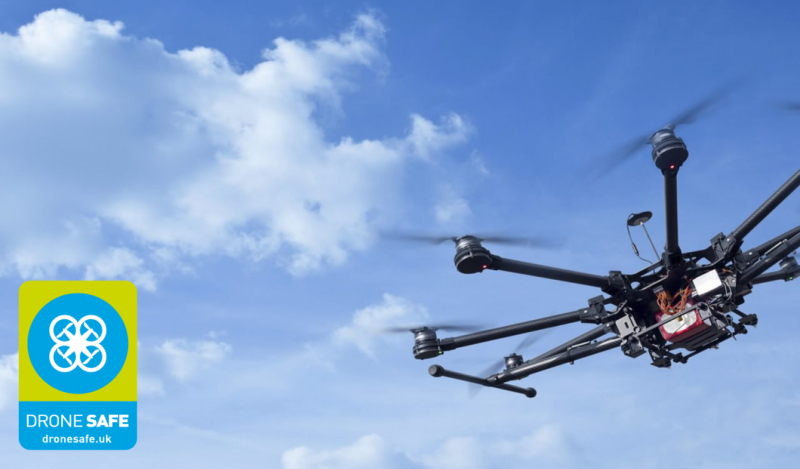The Government recently published its response to the consultation it ran on the safe use of drones in the UK. The headline announcement is the plan to introduce mandatory registration for drones over 250 grams in weight, as well as mandatory competency testing to support it.
While there are still questions about how this will be implemented, the measures are definitely a step in the right direction. Registration as a means to ensure operators are familiar with how to fly safely in the UK’s airspace is welcome and will build on the work we’ve already done with the CAA to promote safe flying through the launch of the Dronesafe.uk website and the Drone Assist app, which already has more than 25,000 registered users. Although it’s not mandatory, NATS has already begun work on a voluntary safety course that we will be launching later in the summer.
Despite a small minority of people who will flout the rules regardless, most operators want to fly safely. The challenge is that many drone operators are not aware of how the UK’s skies are managed and the risks associated with flying a drone in certain areas. A registration scheme to ensure operators have this knowledge before they fly can only be a positive and will hopefully help avoid incidents like those reported at Gatwick earlier this month.
It’s also right that the Government acknowledges, as it does in its full response, that this is just the start of a longer programme of work. Whilst the Government has ruled out mandatory electronic identification in the short term, this remains an essential component of any air traffic management system that incorporates drones.
There’s a strong argument to be made for embedding electronic identification and tracking capability in the registration process in due course. This would enable a service provider to know where and for what purpose a drone was being flown, which in turn would make it easier to offer a form of dynamic airspace service, where operators could be offered access to certain areas of airspace based on their level of competency, the drone they are operating and the purpose and duration of their flight in a way that could build on today’s Non-Standard Flight Planning process which NATS operates.
Other aspects such as defining drone-no-fly zones around airports and areas of critical infrastructure are important and will provide the foundation on which consistent and accurate geo-fencing can be based. We’ll be supporting the Government pilot project (Project Chatham) looking into this.
We know the Government is interested in running some trials around using apps to notify pre-flights. Our free Drone Assist app offers this functionality already and the latest version makes this even easier so we’ll be speaking to the Government to see how we might be able to support their initiative.
The important thing now is for work to continue apace; the UK can be at the forefront of this global industry but it’s important that the proposals advocated are implemented safely and swiftly.
The safety of UK airspace will always be our number one priority but we also want to advance aviation in the UK. We have a lot of experience in safely managing UK airspace and want to apply that expertise to ensure that, in the future, the UK has a safe, strong and successful drone industry that can co-exist alongside today’s manned aviation industry.
Comments
Please respect our commenting policy and guidelines when posting on this website.




09.08.2017
16:43
Steve
If I were a criminal or had bad intent, I’d hardly register the drone I intended to use. It may stop the odd fool who doesn’t realise the risk and if their drone doesn’t have geo-fencing around airports.
09.08.2017
17:25
Jonathan Smith
The association of an airframe with an individual will definitely be an influencing factor in the behaviour of the user. This also means that education and information can be effectively targeted and unregistered drones simply confiscated and impounded pending proper registration.
09.08.2017
22:19
Steve Paffett
I believe it should be the responsibility of the retailer to register the purchaser as with say an air pistol. Lord knows where anyone will find the manpower or money to police some of this though. If the retailer is responsible it might stop some of the all too easy to buy toy shop stuff. Geofencing is probably the best first step
10.08.2017
02:35
Andrew Blackamore
“Unconfirmed reports of a drone sighting led to runway suspension for a total of 14 mins.”
UNCONFIRMED about says it all !
Bird, bag or drone there not proof of what if anything was there!
10.08.2017
14:35
Steve Jack
1) I suspect that Betteridge’s law of headlines applies here.
2) Is the data from Drone Assist getting to civilian and military traffic controllers yet?
3) Have you (or SESAR or the FAA UAS-ID ARC) worked out what what the standards are going to be for UAS electronic identification yet? Are we talking about 3/4G interfaces to an unmanned traffic management system? Or squitters on 433Mhz? Or Bluetooth beacons? Or low power ADS-B? Or something else?
11.08.2017
16:08
Brendan Booth
Head of Safety Performance & ImprovementAndrew, you’re right that there is a challenge in terms of being able to 100% confirm that it was a drone. Today we have to take all drone reports seriously and each one is fully investigated. Introducing new regulation to mandate electronic conspicuity/identification would help to confirm drone sighting.
Steve, re the data – we’re currently working out how best to get that information to controllers in a way that is helpful to them without disrupting their existing ATC activities. Re point 3, all still to be determined I’m afraid – NATS is working with the CAA, European and international partners to progress this.
16:08
Brendan Booth
Head of Safety Performance & Improvement12.08.2017
10:02
Steve Jack
Brendan, re Drone Assist and ATC, That is the same answer that I got from Altitude Angel last December.
I have been using Drone Assist every time I fly this year, but if the data isn’t getting though to manned aviation operating below 1000ft agl (other than other users of Altitude Angel), why am I bothering?
20.08.2017
23:38
Max Baker
Having had a PPL licence I am aware of the dangers in flying an aircraft,but as usual drones that get into the wrong hands spoil the pleasure for the ones that are responsible! Legislation is ok providing once again the cost is kept at an acceptable low level, knowing our government the higher the better!
02.10.2017
20:34
Graham Degg
One of the endless frustrations of PfCO holders is the total lack of policing of the existing laws. It is absolutely no good intrudicing any more controls unless the police are fully briefed on their responsibilities and have both the resources and manpower to carry them out. I’m afraid the professional drone community is just holding its breath waiting fir a serious incident which may then lead to further restrictions on law-abiding users. The idiots will just carry on unregistered with nobody to stop them.
14.12.2017
10:04
phil
I too had a PPL and live just to the south of EGNX CTA and have just purchased two drones online from both the UK and overseas. there is no mention of laws or rules and regulations only of speed and height and features which encourage out of sight flying returning HOME at the push of a button.
enforcement is clearly difficult but also the damage will probably already have been done.
Education and awareness maybe are the only options to have the greatest impact at this time of year with drones being on Xmas lists no doubt.
possibly a national NEWSFLASH type ad could be arranged to make at least the parents aware of NATS & DRONE SAFE.
social media is in everyone’s hands.. the very device that will be being used to ‘FPV’ their flight could and should also be making them aware of their responsibility.
unfortunately firmer rules will only impact more on the people that already abide by them as is always the case.